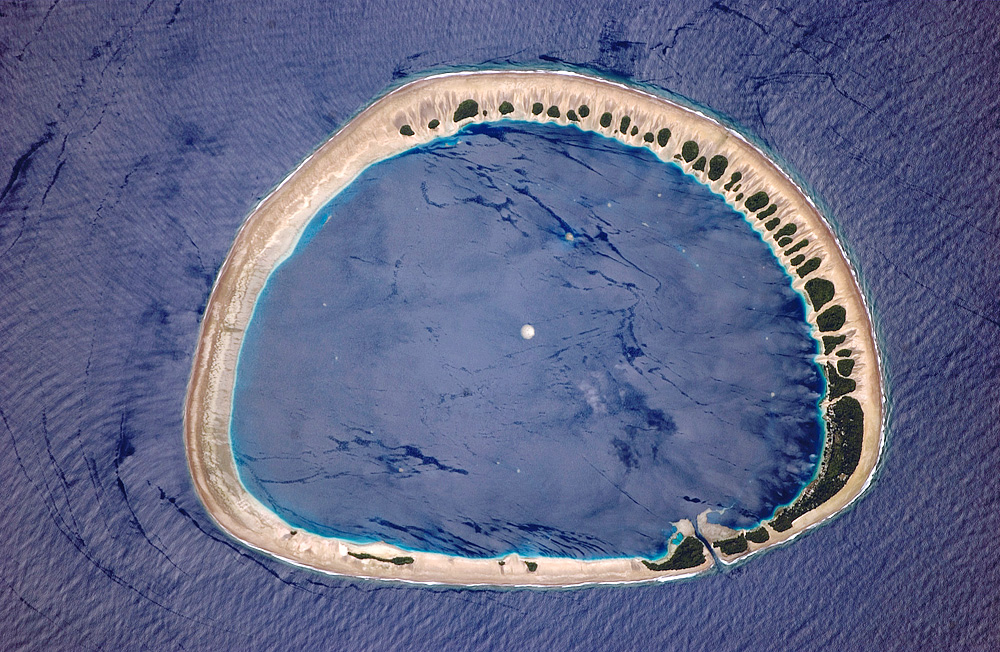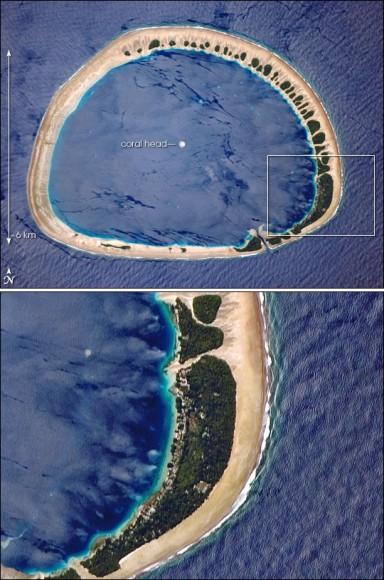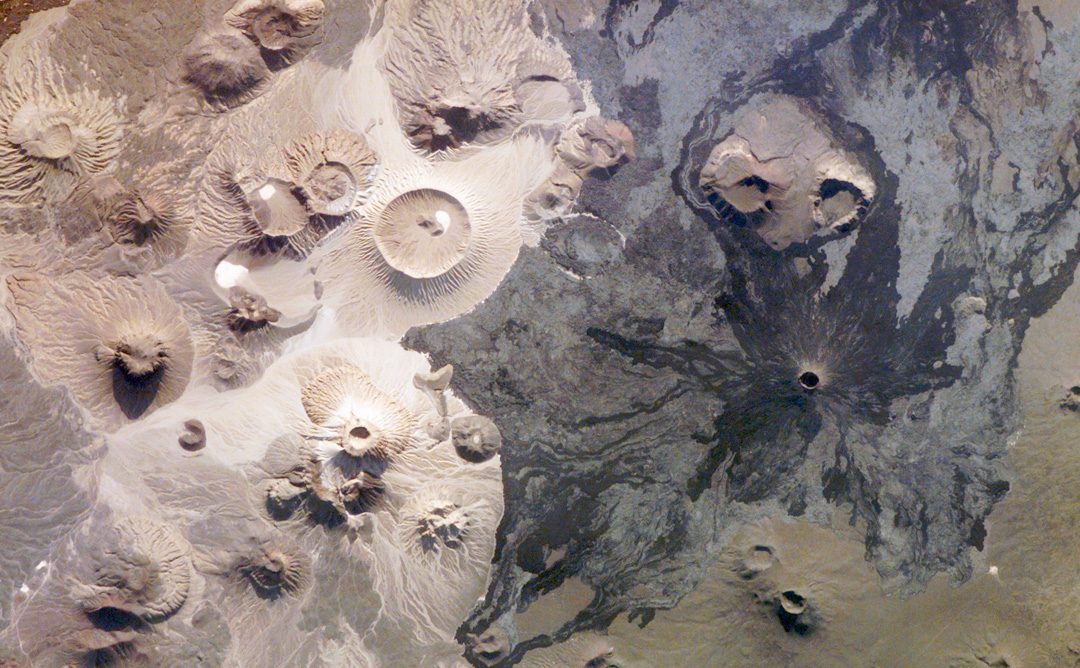Everyone seemed to enjoy the “Where In The World (and What World) Is This?” post last week, so here’s another one for you. This interesting feature was taken by an orbiting spacecraft on May 31, 2006. This striking circular landform could possibly be an impact crater, or a volcanic rim, or another physical feature that is so large, it can only be seen as a whole from the lofty vantage point that a spacecraft in orbit provides. Is this feature on Earth, or is it located on one of the other 176 worlds in our solar system (that’s 7 other planets and 169 known moons)? And what spacecraft is responsible for this image?
Since it’s so close to Earth Day, I had to choose an image from Earth. But what in the world is this a picture of? This is Nukuoro Atoll, a circular island of coral that completely encircles a lagoon. Nukuoro Atoll is part of the Caroline Islands, which stretch northeast of Papua New Guinea in the western Pacific. It is one of 607 islands that make up the Federated States of Micronesia. It is located just north of the equator (3.85° North, 154.9° East). This image reinforces that we live on a wonderfully diverse and endlessly fascinating planet.
Nukuoro Atoll is almost a little world by itself. About 900 people live on Nukuoro, but is very remote. It has no airstrip, and a passenger boat comes to visit irregularly only once a month. The tiny population speaks its own unique language.
The lagoon is 6 kilometers (about 3.7 miles) in diameter. Fishing, animal husbandry, and agriculture are the main occupations. The atoll is mostly sandy, but the dark areas are green vegetation.
In the close-up image, structures are visible. The white dots found in the lagoon are coral heads. The most prominent one is almost directly in the middle of the lagoon.
The picture was taken by astronauts on board the International Space Station as part of the ISS Crew Earth Observations experiment. They used a Kodak 760C digital camera with an 800 mm lens.
Original News Source: Gateway to Astronaut Photography of Earth




